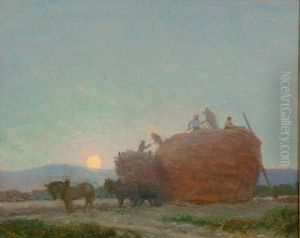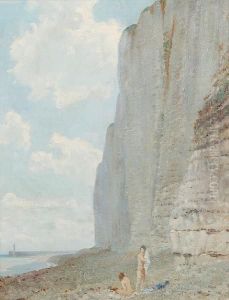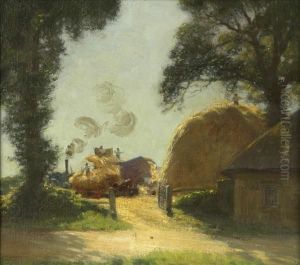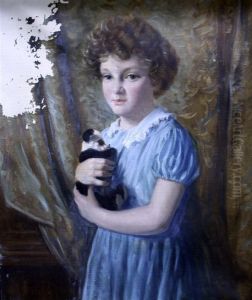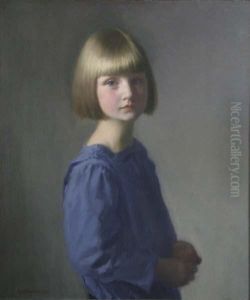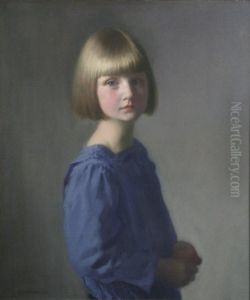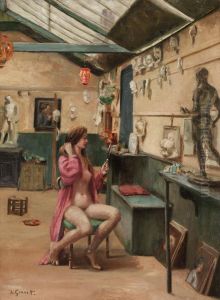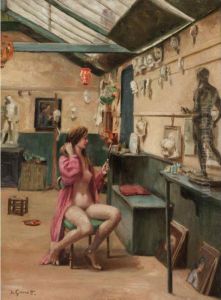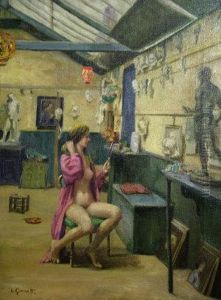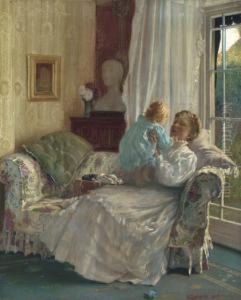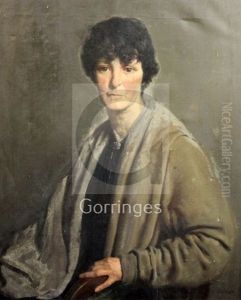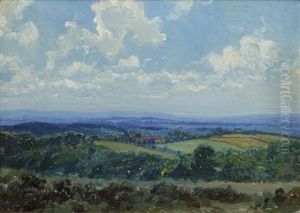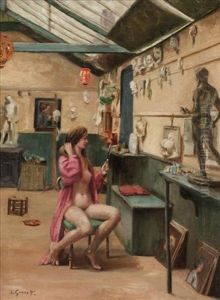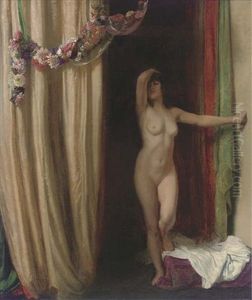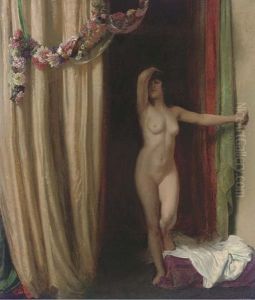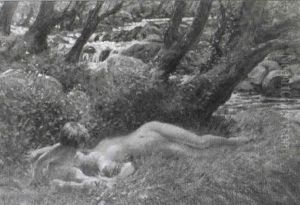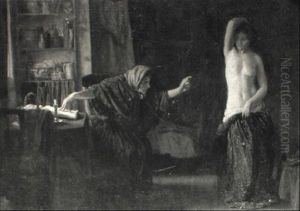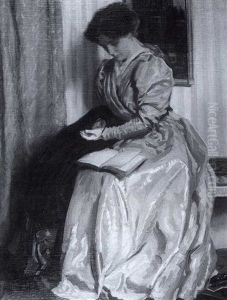Louis Ginnett Paintings
Louis Ginnett was a British artist known for his contributions to portrait painting, mural decoration, and his involvement with the Royal Academy. Born in 1875 in Brighton, England, he showed an early aptitude for art, which led to formal training.
Ginnett's artistic journey began at the Brighton School of Art, where he honed his skills before moving on to further his education at the Royal College of Art in London. His style was influenced by the prevailing trends of his time, including Impressionism and the Arts and Crafts movement. However, Ginnett's work displayed a distinctive character, marked by a strong command of color and composition.
Throughout his career, Ginnett was recognized for his portraiture, which captured the essence of his subjects with sensitivity and depth. His works often reflected a keen understanding of his sitters' personalities, rendered through careful attention to detail and a rich palette. In addition to portraiture, he also undertook mural projects that showcased his versatility and skill in handling large-scale compositions.
One of Ginnett's most notable contributions was his role as a teacher. He had a significant impact on the next generation of artists through his positions at various institutions, including the Royal College of Art. His legacy as an educator is perhaps as enduring as his works, having influenced many students who later became prominent figures in the British art scene.
Louis Ginnett's career was marked by a commitment to the arts, both as a creator and an educator. His works were exhibited at several prestigious venues, including the Royal Academy, where he was a frequent exhibitor. He continued to paint and teach until his death in 1946. Today, Ginnett's work can be found in various collections, and he is remembered as a notable figure in early 20th-century British art.
